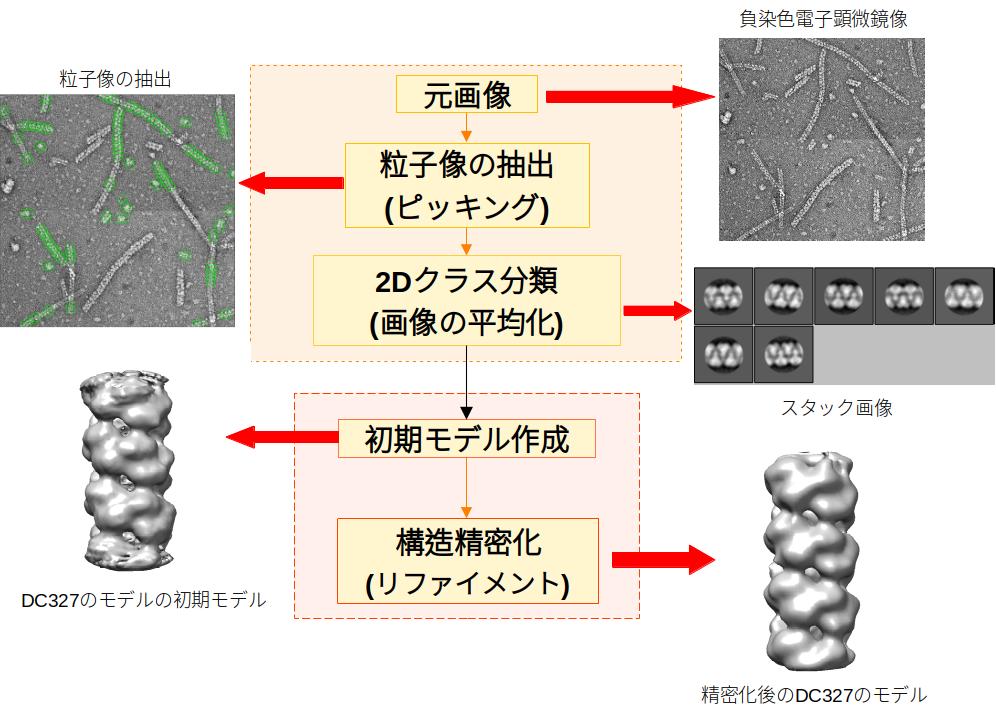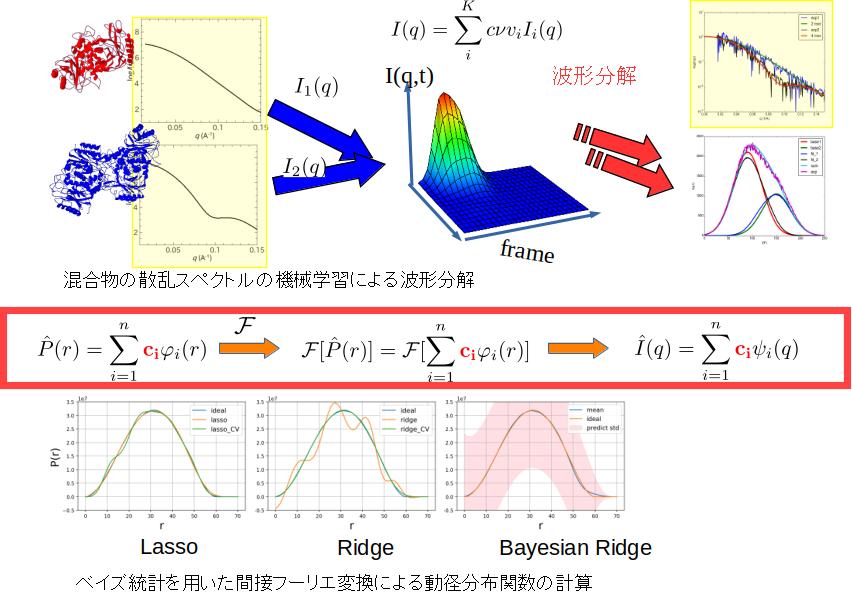Research of Professor Fujisawa¶
Extracting the maximum information from experimental data through analysis¶
From one- and two-dimensional data to a three-dimensional world of shapes¶
Many experimental data, such as spectra (one-dimensional) and projections (two-dimensional), are used to obtain information about shapes (three-dimensional). While the fundamental principles for obtaining this information have been well established, real-world experimental data often present various challenges.
In this research, we analyze experimental data such as negative stain electron micrographs and small-angle X-ray scattering curves to determine the structures of proteins.

A self-assembling protein complex calculated by three-dimensional reconstruction from a two-dimensional negative stain electron micrograph.¶ We also prepare samples and take electron micrographs. |

Spectra of individual components separated from small-angle X-ray scattering curves of a mixed sample.¶ We are developing analysis programs using machine learning and other methods. |
What you can learn through this research¶
You can learn the following:
Applied mathematics and machine learning: The foundation of all technologies.
Programming: Writing numerical analysis codes in Python.
Experimental techniques: Acquiring various experimental techniques such as sample preparation and electron microscopy.
Data analysis: Learning how to analyze experimental data using custom software and extract meaning from it.
For those who are not good at mathematics and computers:¶
For those who are not good at mathematics and computers, we are conducting experiments on the expression, purification, and characterization of pathogenic proteins in collaboration with Dr. Yuji Kamatari of the Gifu University Center for Integrated Research in Life Sciences ( https://researchmap.jp/kamatari?lang=en ).
Regarding student guidance:¶
We focus on:
Developing fundamental engineering skills
Avoiding simple imitation
Cultivating logical thinking

|

藤澤先生の好きな言葉¶ 自強不息(鍛えよ常に) 心手相座(心で感じながら体で表現する) 百煉能熱(何度も鍛錬することによりやる気がでる) 千綾出巧(数多くの試行によって巧みさがでてくる) 知行合一(知識と実践は一体である) 格物到知(実際に物事と向き合い真の理解を目指す) 以武会友(体を鍛えて人との繋がりを深める) |